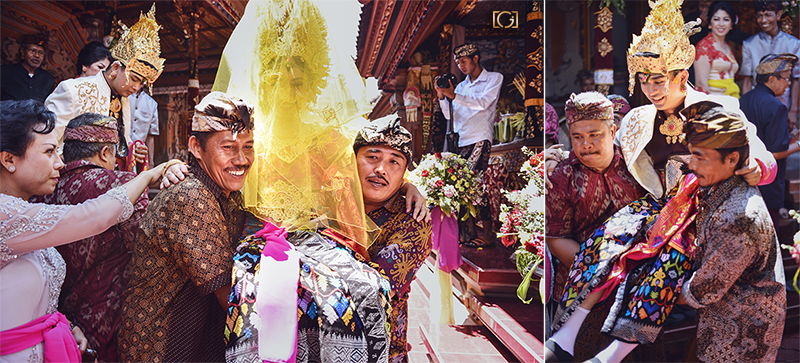Understanding or embracing wedding traditions of your chosen destination location is a beautiful way of respecting the culture and learning more about a country that you’ll no doubt, always remember.
With more and more Australian’s heading to Bali to tie the knot each year, it’s important to learn some of the interesting facts and history surrounding Bali wedding ceremonies (Nganten). Or hey, this might help fill the gaps in any future wedding small talk with the in laws. Without further ado, here are some of the different marriage styles that add to the rich culture and traditions of the Balinese Nganten ceremony.
Looking for your dream Bali Wedding Venue? Find it with this directory to Bali’s Best!
1. Memadik

2. Ngerorod
Have you ever thought a romantic Bali wedding could involve a sneaky sleepover, a fake parental search party and public wedding over a month later? Ngerorod is the Balinese word for elopement which entails just that, sparking up all of the theatrical drama for the sake of tradition.
The bride and groom arrange to meet and spend a night at a mutual friend’s house filled with offerings. Naturally, the bride’s parents pretend to be outraged and then organise an unsuccessful search party while the couple secretly consummate the marriage. Finally, 42 whole days after the drama, there will be a public wedding. Although this is probably the most creative type of ceremony, eloping requires much smaller budget and is a good choice for couples who want to incorporate fun and tradition without the cost of extravagance.
3. Nyentana
A Nyentana ceremony goes against Bali’s traditional patriarchal culture and involves the groom joining the bride’s family, as opposed to the other way around. This usually only occurs when the bride doesn’t have any male family members to inherit family property or businesses. Therefore, the groom in this situation assumes the bride’s family lineage and is under obligation to continue it. Under this type of ceremony, the bride and her family have the responsibility of asking the groom’s family for permission to marry.
The more you know!
Related articles
Sweet Tradition: Wedding Traditions from Around the World

